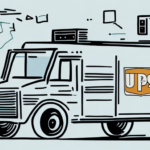Understanding FedEx's Extended Area Surcharges
FedEx, one of the world's largest courier delivery services, has implemented extended area surcharges for shipments to remote locations. These additional fees can significantly impact the shipping costs for both businesses and consumers. This article delves into the intricacies of extended area surcharges, their effects on shipping expenses, and strategies to mitigate their impact.
What Are Extended Area Surcharges?
Extended area surcharges are fees imposed by courier services like FedEx on packages destined for remote or hard-to-reach locations. These areas typically include rural regions or locations far from major urban centers. The surcharge amount varies based on the destination's distance from central hubs and the package's size and weight.
Reasons for Extended Area Surcharges
- Increased Transportation Costs: Delivering to remote areas often requires specialized vehicles or additional stops, increasing operational costs.
- Infrastructure Challenges: Poor infrastructure in remote regions can lead to delays and higher handling expenses.
- Lower Delivery Volumes: Fewer deliveries to these areas mean higher per-package costs to maintain profitability.
The Impact on Shipping Costs
Extended area surcharges can range from a modest increase to over a hundred dollars per package, depending on the factors mentioned. For businesses that frequently ship to remote locations, these surcharges can erode profit margins. Consumers may also face higher shipping fees, making products less affordable.
Statistical Insights
According to a 2023 report by the U.S. Department of Transportation, remote area shipping costs can be up to 30% higher than standard rates. This significant increase underscores the financial burden on both businesses and consumers.
Factors Determining the Surcharge Amount
Several factors influence the extent of extended area surcharges:
- Distance: The farther the destination from a major hub, the higher the surcharge.
- Package Size and Weight: Larger and heavier packages incur higher surcharges due to increased handling and transportation costs.
- Delivery Frequency: Areas with infrequent deliveries may attract higher surcharges to compensate for the irregular service.
- Security Requirements: Regions with higher security risks may necessitate additional precautions, increasing delivery costs.
Identifying If Your Location Is Affected
FedEx offers tools to help users determine if their destination is subject to extended area surcharges:
- Visit the FedEx Zone Map and enter your ZIP or postal code.
- Use the FedEx Rate Tools to estimate shipping costs based on your specific address.
These tools provide clarity on potential additional fees, allowing for better budgeting and shipping planning.
Alternatives to FedEx for Remote Shipping
While FedEx is a leading courier service, other options might offer more competitive rates for remote deliveries:
- Regional Carriers: Local delivery services often have lower surcharges for specific areas due to their in-depth knowledge of the region.
- Freight Services: For larger shipments, freight carriers can be a cost-effective alternative.
- Hybrid Services: Combining multiple carriers can optimize costs and delivery times.
Comparing different carriers and services can lead to significant savings and more efficient shipping solutions.
Strategies to Mitigate Surcharge Costs
Both businesses and consumers can adopt several strategies to reduce the financial impact of extended area surcharges:
- Optimize Packaging: Reducing package size and weight can lower surcharges.
- Consolidate Shipments: Combining multiple orders into a single shipment can decrease the number of surcharged deliveries.
- Negotiate with Carriers: Businesses with high shipping volumes can negotiate better rates or discounts.
- Use Alternative Shipping Methods: Exploring sea or air freight for specific deliveries might offer cost benefits.
Volume Discounts
Engaging with FedEx's business account services can provide access to volume discounts, potentially reducing the per-package surcharge for frequent shippers.
The Future of Remote Shipping
Advancements in technology and logistics are reshaping remote shipping:
- Drone Deliveries: Companies are experimenting with drones to deliver packages to hard-to-reach areas more efficiently.
- Autonomous Vehicles: Self-driving vehicles promise to reduce delivery times and costs in remote regions.
- Sustainable Practices: There is a growing emphasis on eco-friendly delivery methods, such as electric vehicles, which can also improve cost efficiencies.
These innovations aim to make remote shipping more affordable and reliable, potentially reducing or eliminating extended area surcharges in the future.
Conclusion
Extended area surcharges are a significant consideration for anyone shipping to remote locations. By understanding the factors that drive these fees and exploring alternative strategies and carriers, businesses and consumers can effectively manage and potentially reduce their shipping costs. Staying informed about emerging technologies and market trends will also be crucial in navigating the evolving landscape of remote shipping.




















